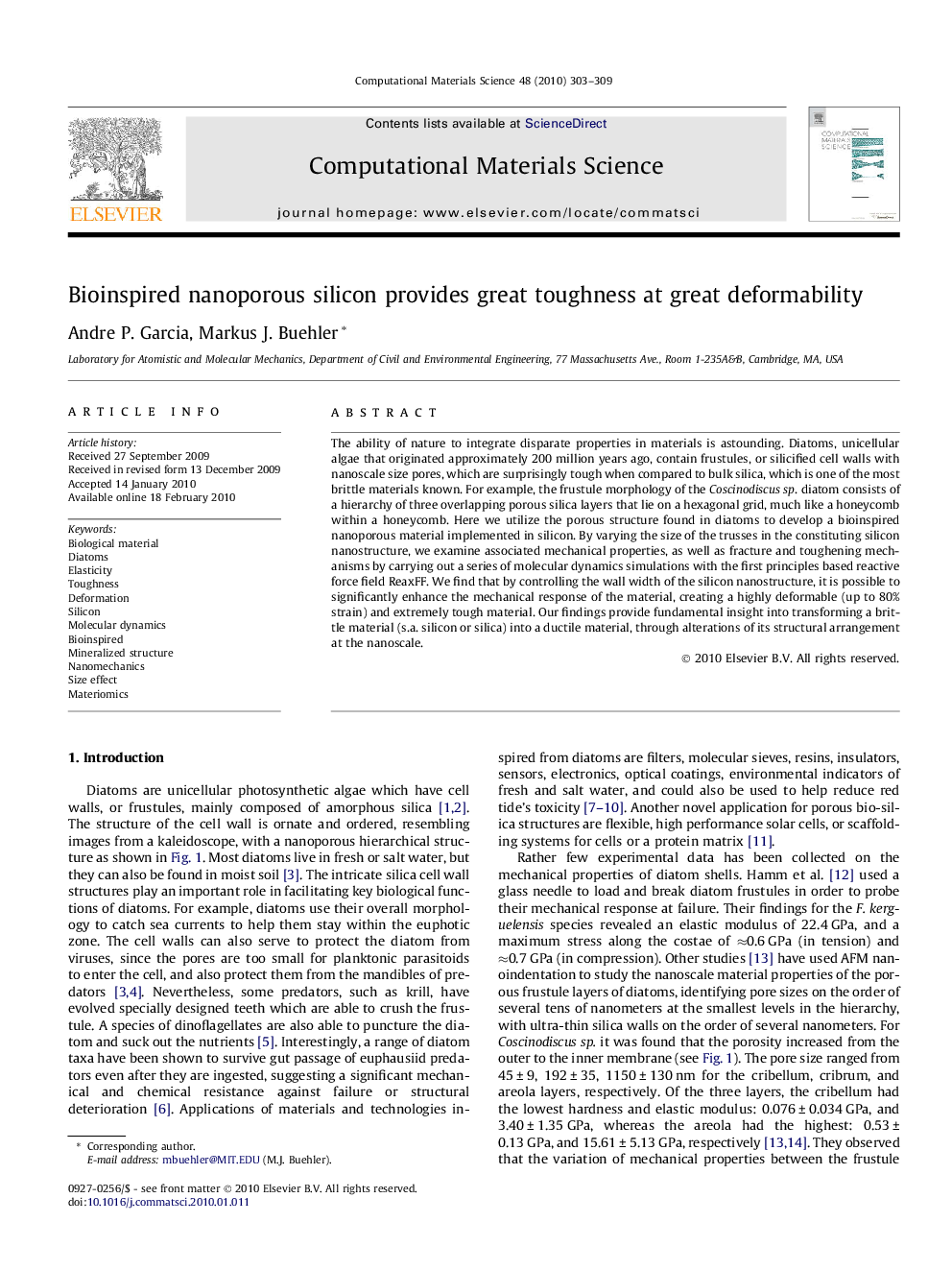| Article ID | Journal | Published Year | Pages | File Type |
|---|---|---|---|---|
| 1562715 | Computational Materials Science | 2010 | 7 Pages |
Abstract
The ability of nature to integrate disparate properties in materials is astounding. Diatoms, unicellular algae that originated approximately 200 million years ago, contain frustules, or silicified cell walls with nanoscale size pores, which are surprisingly tough when compared to bulk silica, which is one of the most brittle materials known. For example, the frustule morphology of the Coscinodiscus sp. diatom consists of a hierarchy of three overlapping porous silica layers that lie on a hexagonal grid, much like a honeycomb within a honeycomb. Here we utilize the porous structure found in diatoms to develop a bioinspired nanoporous material implemented in silicon. By varying the size of the trusses in the constituting silicon nanostructure, we examine associated mechanical properties, as well as fracture and toughening mechanisms by carrying out a series of molecular dynamics simulations with the first principles based reactive force field ReaxFF. We find that by controlling the wall width of the silicon nanostructure, it is possible to significantly enhance the mechanical response of the material, creating a highly deformable (up to 80% strain) and extremely tough material. Our findings provide fundamental insight into transforming a brittle material (s.a. silicon or silica) into a ductile material, through alterations of its structural arrangement at the nanoscale.
Keywords
Related Topics
Physical Sciences and Engineering
Engineering
Computational Mechanics
Authors
Andre P. Garcia, Markus J. Buehler,
